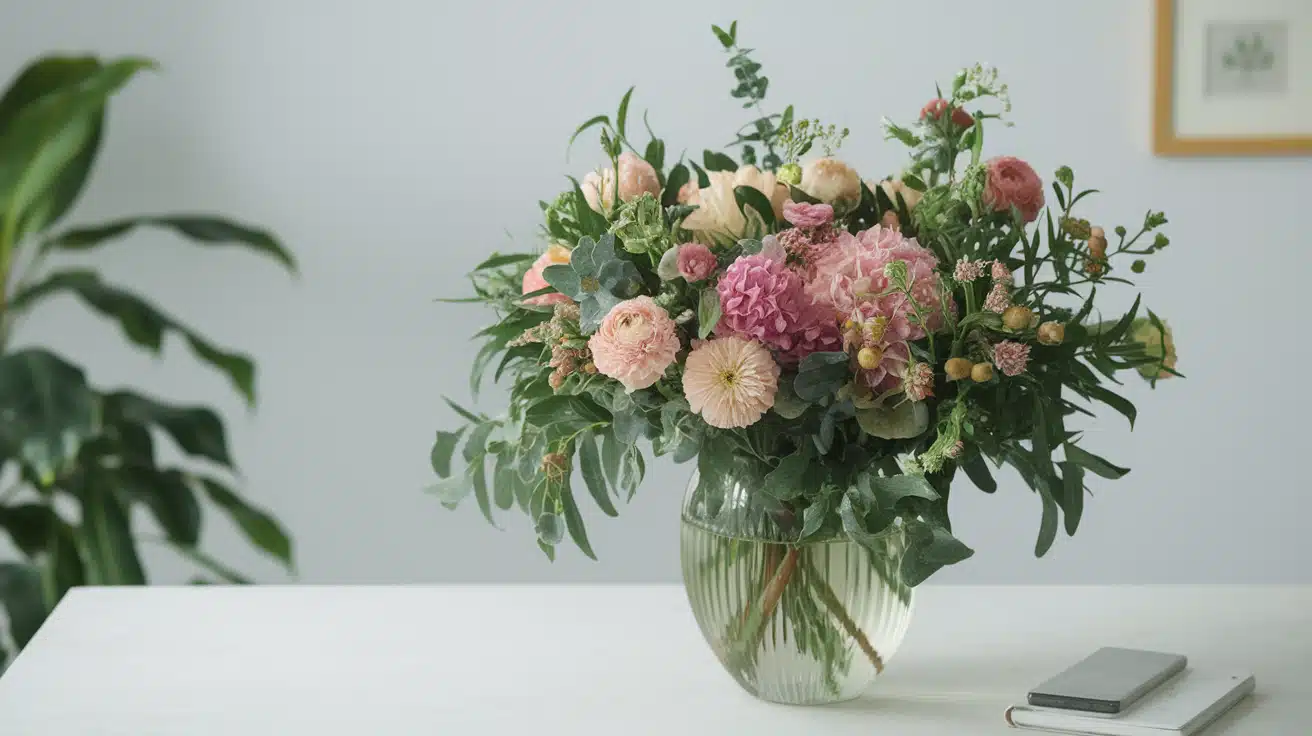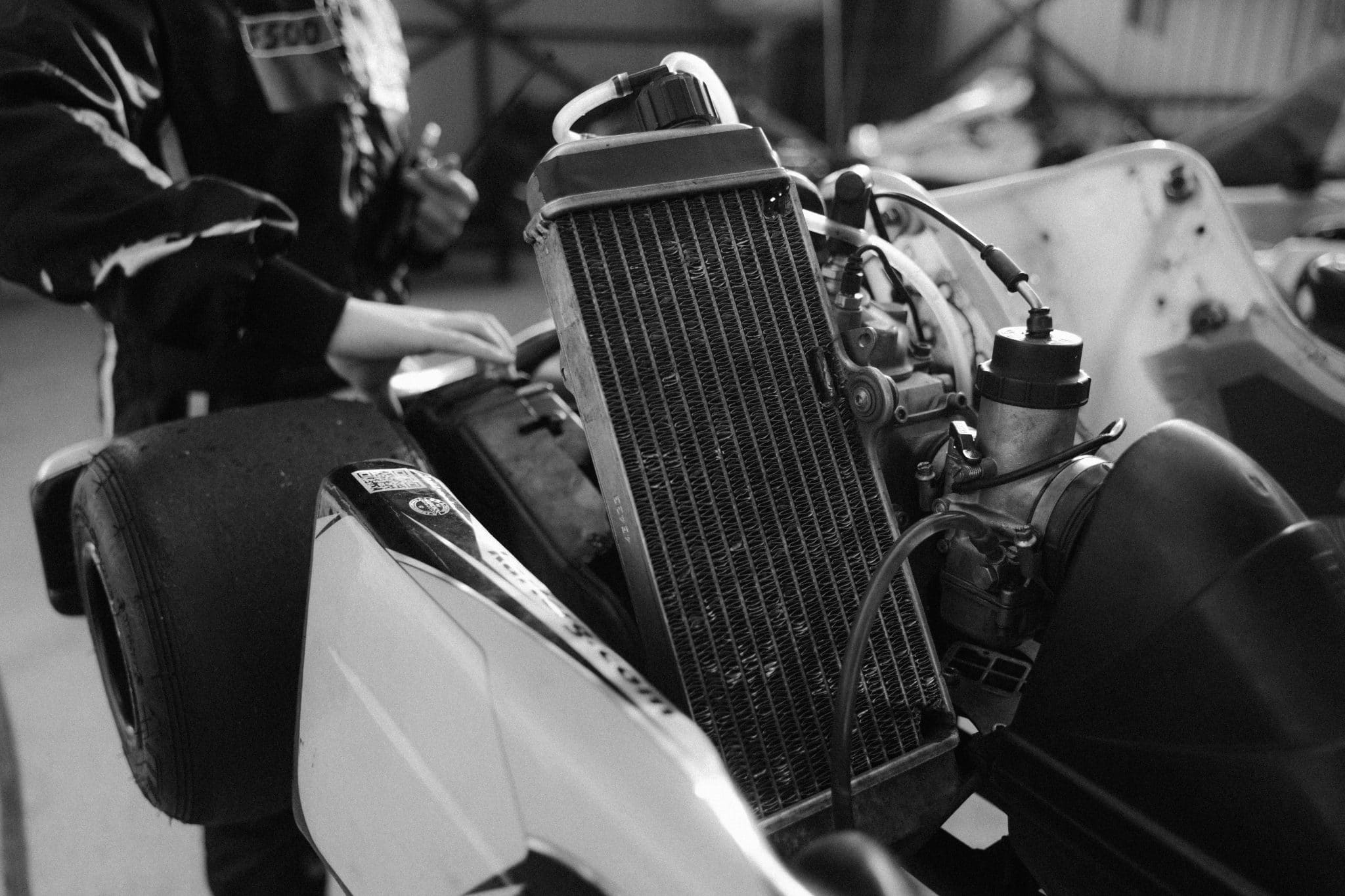Want to learn how to make pretty flower displays at home? Flower arranging is a fun skill anyone can master with some basic know-how. This guide will show you how to create a lovely pastel flower display using items from your local grocery store.
No fancy tools or expensive blooms are needed! You can turn simple store-bought flowers into a professional-looking centerpiece that brings beauty to any room. The steps are easy to follow and perfect for first-time flower arrangers.
Even with limited time and budget, you can make something wonderful. Follow this guide to learn the basics of flower structure, balance, and design.
Let’s start creating your first stunning flower arrangement today!
What is the Basic Rule in Flower Arrangement?
Before creating your first arrangement, it helps to know some basic principles that guide good design. Balance is key in flower arranging—your display should look stable and not top-heavy or lopsided.
Think about color combinations that work well together; pastel colors often blend nicely for beginners. When selecting flowers, mix different shapes and sizes for visual interest.
Large flowers create focal points, while smaller blooms add detail and fill space. The height rule is simple: Front flowers should be lower, and back flowers should be taller.
This creates depth in your arrangement. Working with odd numbers (three, five, or seven of each flower type) often looks more natural than even numbers. Remember that white space isn’t bad – some breathing room between blooms can make each flower stand out more.
These simple guidelines will help you create balanced, appealing arrangements as you start your flower arranging hobby.
Flower Arranging for Beginners: A Step-by-Step Approach
Tools and Materials Needed
| Item | Purpose |
|---|---|
| Mason jar or similar vase | Holds and displays the flower arrangement. |
| Mixed flower bouquet | Main floral elements (hydrangeas, roses, etc.). |
| Greenery and foliage | Adds texture and fills in the arrangement. |
| Fresh water | Keeps flowers hydrated and fresh. |
| Sharp scissors or garden shears | Used to trim flower stems cleanly. |
| Clean work surface | Provides space to arrange and cut flowers. |
| Paper towels | For quick and easy cleanup. |
| Optional: floral preservative | Helps extend the life of the bouquet. |
Step 1: Prepare Your Vase and Greenery
Fill your mason jar about two-thirds full with fresh, clean water. Before placing any stems in the vase, remove all leaves that would sit below the water line. This prevents rotting and keeps your water cleaner longer.
Take each stem of greenery and give it a fresh cut at an angle using sharp scissors. This creates more surface area for water absorption. Place your greenery into the vase at angles so the stems form an X pattern at the base.
This creates a supportive structure for your flowers. Try to make a balanced foundation with greens extending slightly over the vase edges. Think of the greenery as the backbone of your arrangement, giving everything else support.
Step 2: Add Your Largest Blooms
Start with your largest, heaviest flowers, like hydrangeas. These substantial blooms will be the anchor points in your arrangement. To determine how much stem to cut, hold the flower next to your vase and measure where you want it to sit.
Cut the stems at an angle for better water intake. Place these larger flowers toward the edge of the vase since they often droop slightly over the sides. Add them in a triangular formation – this helps create natural balance in your arrangement.
Rotate your vase as you work to ensure your design looks good from all angles. Your largest flowers should sit lower in the arrangement, creating a base for medium and smaller blooms.
Step 3: Build with Medium-Sized Flowers
Now add your medium-sized flowers like mums, carnations, or roses. Cut these stems slightly longer than your base flowers so they sit higher in the arrangement.
Please place them in the spaces between your larger blooms, continuing to work in that triangular pattern. Make sure to insert each stem at an angle, pointing toward the center of the vase.
This helps maintain the structural integrity of your arrangement. Keep rotating your vase as you add each flower to ensure balanced coverage on all sides. Check your work from different angles to spot any gaps or heavy spots.
If one side looks fuller than the other, add flowers to balance it out. Aim for a natural, flowing look rather than stiff precision.
Step 4: Add Height and Accent Flowers
For the final layer, add your tallest flowers, like delphinium or tall daisies, to create height at the top of your arrangement. These should be the longest stems in your bouquet, creating a focal point that draws the eye upward.
Then, fill in any remaining gaps with smaller accent flowers. Look for empty spaces where stems are visible and add small blooms or extra bits of greenery to hide them.
The goal is to create what florists call an “ice cream cone effect” – a triangular shape that’s wider at the top and narrows at the base. When you think you’re finished, turn the vase slowly and look for any bare spots or areas that need balancing.
Your arrangement should look full and balanced from every angle.
Video Tutorial
Check out this YouTube video for a detailed step-by-step Tutorial on Flower Arranging for Beginners
Flower Maintenance Tips to Make Arrangements Last
1. Water Management
Keep an eye on the water level every day and top it up if it starts to drop. Replace the water completely every two to three days to keep bacteria from forming. When you do this, trim the stems to help them absorb water more easily.
Use water at room temperature, as it’s gentler on the flowers. A pinch of sugar can act as a natural food source. Remove fallen petals or leaves from the water right away—they can make flowers fade faster.
Always make sure there’s water in the vase to keep your arrangement healthy.
2. Temperature Considerations
Avoid placing your flowers in direct sunlight, which can make them fade too quickly. Keep them away from heaters or warm appliances. A cooler room helps most flowers last longer.
Stay away from drafty areas or fans, which can dry out the blooms. If possible, move the arrangement to a cooler spot at night. Some flowers stretch toward light, so turn the vase each day to keep the look even.
Please pay attention to how each flower responds to the room it’s in.
3. Flower Removal and Replacement
As soon as a flower begins to droop, gently remove it to protect the others. You don’t need to replace the whole arrangement—swap out a few faded blooms. Be careful not to disturb the rest while doing this.
If the bouquet looks thin after some flowers are removed, group the remaining ones in a smaller vase. Some flowers last longer than others, so knowing which ones hold up well can help in planning.
4. Misting and Humidity
A light mist with a spray bottle helps flowers stay fresh, especially in dry rooms. Don’t spray too much, as it can lead to moisture problems, especially on full flowers like hydrangeas. Mist early in the day so the extra moisture can dry by night.
If your flowers look wilted but the stems are in water, the air might be too dry. Some flowers can even take in moisture through their petals, so misting can help revive them. Avoid misting fragile petals that may spot when wet.
5. Arrangement Refreshing
Every few days, lift the whole bouquet and trim the stems slightly. This helps the flowers keep drinking water. You can also fix any that have shifted or dropped. Remove any leaves that are yellow or soft, even if the flower still looks okay.
It’s also a good time to clean the vase and replace the water. A tiny drop of bleach in the fresh water can help keep it clear. Gently separate any flowers that have started sticking together to let air move freely around them.
Things to Avoid When Arranging Flowers
| Mistake | Problem | Fix |
|---|---|---|
| Leaves in water | Bacteria grows | Remove below-water leaves |
| Flat stem cuts | Poor water intake | Cut at an angle |
| Too many flowers | Water can’t reach all stems | Use fewer or bigger vases |
| Dull scissors | Stems get crushed | Use sharp scissors |
| Direct sunlight | Flowers wilt fast | Use indirect light |
| Mixing old/new flowers | New ones age faster | Group by freshness |
| Dead blooms left in | Speeds up decay | Remove wilted flowers |
| Low water level | Flowers dry out | Fill 2/3 and check daily |
Conclusion
Creating flower arrangements is a rewarding hobby that brings natural beauty into your home. With just a few simple steps, you can make stunning displays from grocery store flowers.
Remember that the key to successful arranging lies in building a good foundation with greenery, adding flowers in order of size, and maintaining balance throughout.
Your skills will grow with each arrangement you make. Don’t worry about making perfect displays – the charm often comes from the natural, slightly uneven look. Taking good care of your arrangement extends its life and keeps it looking fresh.
As you gain confidence, try different flower types and color combinations. Flower arranging is not just about the final product but also about enjoying the creative process.
Your home deserves the warmth and joy that fresh flowers bring!
Frequently Asked Questions
1. How Often Should I Change the Water in My Flower Vase?
Change the water completely every two to three days to keep the flowers fresh for longer.
2. Can I Use Any Container as a Vase for My Flower Arrangement?
Yes, most containers that hold water can work as vases if they’re clean and the right size for your flowers.
3. How Do I Know How Much to Cut from My Flower Stems?
Hold the flower next to your vase and mark where you want it to sit, then cut at that point on an angle.
4. What Should I Do if Some Flowers in My Arrangement Die Before Others?
Remove dead flowers right away and rearrange the remaining blooms to fill gaps.












